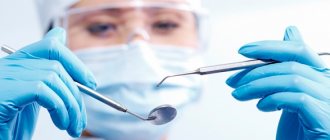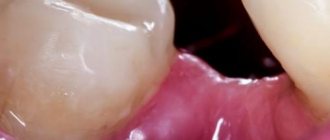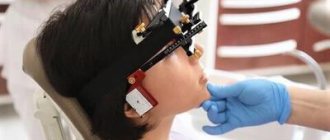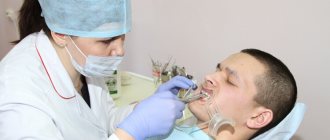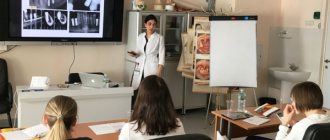When did this direction appear?
The need for professional hygiene measures was first discussed in the 19th century in the USA.
It was during this period that the number of patients with various forms of caries and infectious and inflammatory diseases of the oral cavity increased sharply. According to historical reports, the number of people needing emergency dental care was more than 60%. People underestimate the importance of dental hygienists
One of the reasons for the sharp increase in the incidence of caries was identified as insufficient and improper oral hygiene, so in 1843, special courses were organized at all dental offices in which patients were taught how to properly brush their teeth and care for their teeth and gums.
In Russia, the first qualified dental hygienists appeared only in 2000-2001. This is due to the high costs of training specialists in this profile and the low demand for these services. Now the industry is actively developing and professional hygienic care offices have been opened in many large cities on the basis of private dental clinics.
In the dental hygienist's office
What happens in practice?
A dental hygienist carries out a whole range of work and in his work he uses a wide variety of equipment and approaches.
In general, all procedures that are required for almost a patient are carried out in several stages:
- At the first stage, the specialist examines the work area. In this case, a special coloring composition is applied, with the help of which areas covered with dental plaque are identified.
- At the second stage, plaque is removed. To do this, specialists use a powder-blasting machine and Air-Flow technology.
- Using an ultrasonic device, tartar is removed.
- The fourth stage involves removing tartar with a dental instrument. This measure is taken if the ultrasonic device does not work 100%.
- And at the last stage, the specialist performs manipulations to polish the teeth and strengthen the enamel using fluoride varnish.
In addition to the above procedures, the specialist teaches how to properly use dental floss, which is an integral part of hygiene procedures at home.
History of the profession
Traces of dental care are recorded by archaeologists during excavations with remains over 1.8 million years old. The first predecessors of toothbrushes appeared in India, and the first toothpaste recipes appeared in Greece around 1500 BC. A real toothbrush made from pig bristles was invented by the Chinese in the 15th century, and already in the 18th century the English company Addis began producing brushes. But until the beginning of the 19th century, oral hygiene was limited to removing tartar and was the prerogative of barbers, not doctors.
America can rightfully be considered the birthplace of oral hygiene. There, at the beginning of the 19th century, dentists formed the habit of entrusting preventive oral care activities to their assistants. In 1844, this was the reason for the birth of a “new” medical specialty: dental hygienist.
The modern toothpaste tube was invented by the American Colgate; 1937 is the date of the creation of nylon, which opened a new page in the development of toothbrushes: durable, elastic, moisture-resistant and antibacterial. At the end of the 30s of the last century, the first electric toothbrush was born in the USA, and in 1967, oral irrigators were invented there. All this forms the basis of periodontal care today.
In Russia, dental hygienists have been practicing since the beginning of the twentieth century, but then the profession was forgotten due to objective circumstances: a series of revolutions and wars. The first Soviet toothpaste dates back to 1950! And only since 2001, dental hygiene offices began to open in the country.
One of the first advertising posters for toothpaste invented in the USA.
Professional oral hygiene
Are toothpaste and brush enough to take care of your teeth? Why do you need professional oral hygiene?
The story is told by Oles Vyacheslavovich Shevchenko, Candidate of Medical Sciences, Chairman of the Association of Dental Hygienists of Russia, Director of the Neodent Aesthetic Dentistry Clinic.
Shevchenko Oles Vyacheslavovich was born in 1970 in the city of Poltava in Ukraine. Graduated from the Ukrainian Medical Dental Academy with honors. Since 1995 he has lived and worked in Russia, in Moscow. Married. In 2004 he defended his Ph.D. thesis.
— Today they are increasingly saying that you need to visit a dental hygienist twice a year. But not everyone knows what kind of specialist he is.
- This is true. In our country, unfortunately, there was no such specialty for a very long time. More precisely, she was forgotten. Dental hygienists worked in Russia back in 1913.
Then in Moscow, Chinese healers who treated dental diseases used special hooks with a hollow wooden handle, which they filled with ordinary cabbage worms. Having picked with such a tool, they publicly extracted the worms from the tooth, after which the amazed public dispersed in full confidence that it was these worms that were the cause of the toothache. Hygienists had to fight such general illiteracy. But after the revolution, this wonderful specialty was lost.
According to research by domestic scientists, the prevalence of caries in permanent teeth in 12-year-old schoolchildren in Russia ranges from 61% to 96%. And in the adult population, the incidence of dental caries reaches 100%. On average, each elderly person in the group of 65 years and older has 5-6 teeth left in the oral cavity.
World experience and scientific research by scientists have convincingly proven that only a targeted, effective preventive program can have a significant impact on reducing the level of dental morbidity. In countries where preventive programs operate, dental morbidity has decreased by 2–4 times.
However, the widespread implementation of the hygienic training and education program is limited due to a number of reasons, the main one of which is the lack of a specialist who could devote his entire time to the prevention of dental diseases. Such a specialist, a dental hygienist, appeared in our country only in 2001.
Today in Russia there are about 3,000 qualified dental hygienists. Compare: in the USA there are 150 thousand of them, and this number is growing all the time. In America and Europe, visiting a dental hygienist is the norm, part of the philosophy of taking care of your health.
But in our country this philosophy is only just being formed. Unfortunately, most of our patients do not have a culture of oral care. Both doctors and patients are more accustomed to dealing with problems that have already arisen than to preventing them. Although prevention is much more beneficial both for each patient and for the state as a whole.
— What does a dental hygienist do?
— Its main task is to teach a person to properly care for his teeth and oral cavity, creating all the necessary conditions for this. Therefore, for a high-quality complex of professional oral hygiene, the hygienist will need 1 - 1.5 hours, depending on the clinical situation.
At the appointment, the hygienist carefully assesses the patient’s oral condition and invites him to brush his teeth with a brush and toothpaste, as he does this every day. After brushing the teeth, the hygienist shows the patient the mistakes that were made and teaches them to do it correctly.
Some of you may say: “...should I teach you how to brush my teeth?” Yes, the hygienist, using special coloring solutions, will clearly demonstrate to you how much plaque remains on the teeth after improper brushing. What you see makes an impression.
After correcting skills, the hygienist carries out a complex of professional oral hygiene. First, the soft plaque is removed from the teeth using an Air-Flow device. Cleaning is then continued using an ultrasonic device, which helps remove harder deposits. And if there is “neglected” tartar, special tools are used. This complex is recommended to be completed once every six months.
After all procedures, the hygienist selects dental care products that are suitable for a particular patient. Here, the lifestyle, existing problems, and social status of the person are taken into account. After all, today you can find high-quality brushes, pastes, flosses and rinses for quite reasonable money.
We invite you to familiarize yourself
